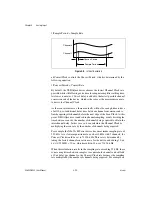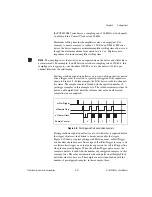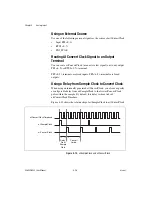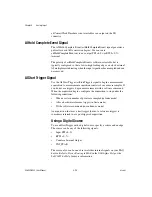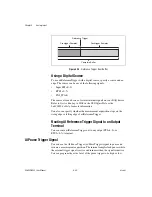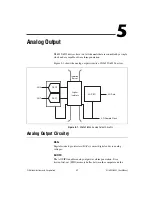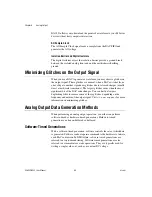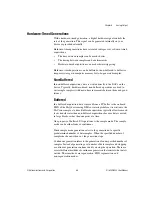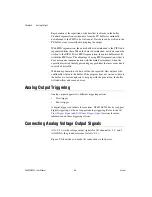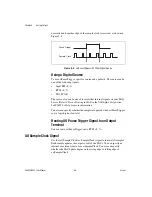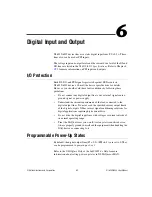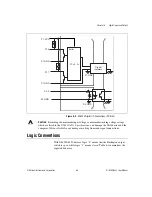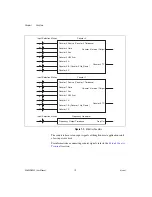
Chapter 5
Analog Output
5-2
ni.com
DACs. It allows you to download the points of a waveform to your M Series
device without host computer interaction.
AO Sample Clock
The AO Sample Clock signal reads a sample from the DAC FIFO and
generates the AO voltage.
Isolation Barrier and Digital Isolators
The digital isolators across the isolation barrier provide a ground break
between the isolated analog front end and the earth/chassis/building
ground.
Minimizing Glitches on the Output Signal
When you use a DAC to generate a waveform, you may observe glitches on
the output signal. These glitches are normal; when a DAC switches from
one voltage to another, it produces glitches due to released charges (usually
worst at mid-scale transitions). The largest glitches occur when the most
significant bit of the DAC code changes. You can build a lowpass
deglitching filter to remove some of these glitches, depending on the
frequency and nature of the output signal. Visit
ni.com/support
for more
information on minimizing glitches.
Analog Output Data Generation Methods
When performing an analog output operation, you either can perform
software-timed or hardware-timed generations. Hardware-timed
generations can be non-buffered or buffered.
Software-Timed Generations
With a software-timed generation, software controls the rate at which data
is generated. Software sends a separate command to the hardware to initiate
each DAC conversion. In NI-DAQmx, software-timed generations are
referred to as on-demand timing. Software-timed generations are also
referred to as immediate or static operations. They are typically used for
writing a single value out, such as a constant DC voltage.


